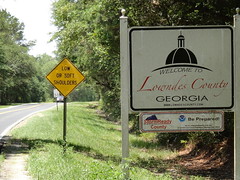Georgia Tech Professor Ellen Dunham-Jones spole January 2010 at TEDxAtlanta, Retrofitting suburbia
Here’s the video: Continue readingIn the last 50 years, we’ve been building the suburbs with a lot of unintended consequences. And I’m going to talk about some of those consequences and just present a whole bunch of really interesting projects that I think give us tremendous reasons to be really optimistic that the big design and development project of the next 50 years is going to be retrofitting suburbia. So whether it’s redeveloping dying malls or re-inhabiting dead big-box stores or reconstructing wetlands out of parking lots, I think the fact is, the growing number of empty and under-performing, especially, retail sites throughout suburbia gives us actually a tremendous opportunity to take our least-sustainable landscapes right now and convert them into more sustainable places. And in the process, what that allows us to do is to redirect a lot more of our growth back into existing communities that could use a boost, and have the infrastructure in place, instead of continuing to tear down trees and to tear up the green space out at the edges.



